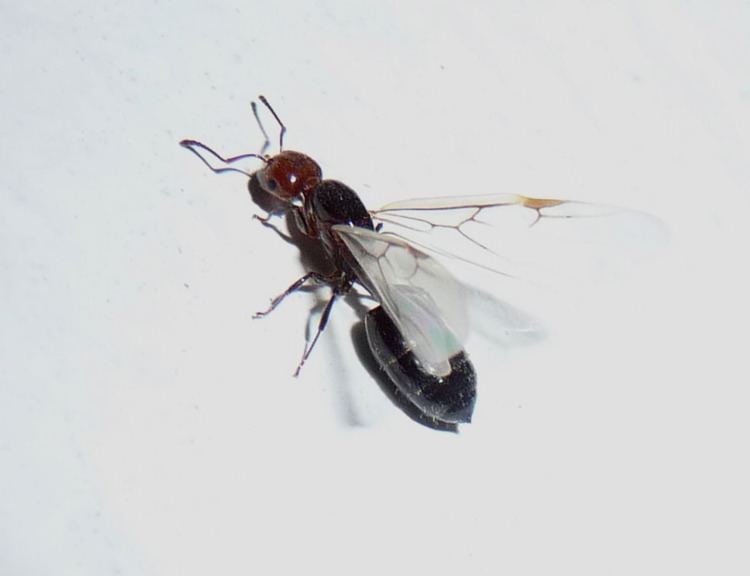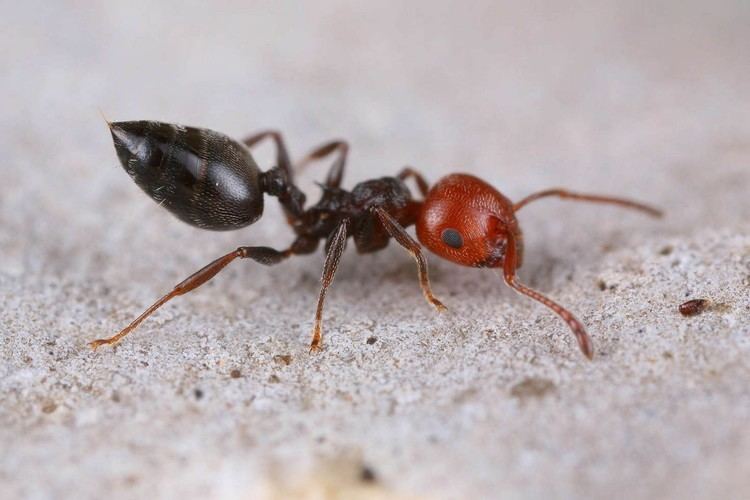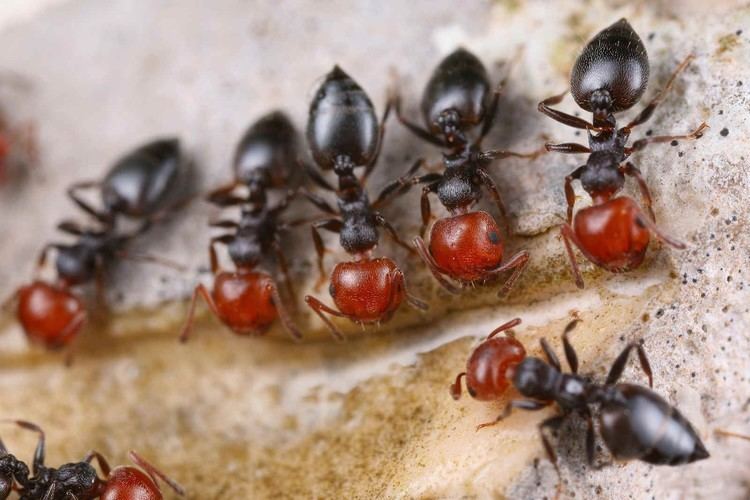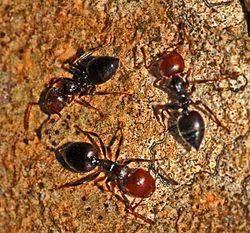Superfamily Vespoidea Order Hymenopterans | Suborder Apocrita Tribe Crematogastrini Rank Species | |
 | ||
Similar Crematogaster, Ant, Messor, Messor barbarus, Insect | ||
Crematogaster scutellaris is a species of ants belonging to the family Formicidae subfamily Myrmicinae.
Contents
- Crematogaster scutellaris queen is laying an egg
- Description
- Biology and ecology
- Distribution
- References
Crematogaster scutellaris queen is laying an egg
Description

Crematogaster scutellaris can reach a length of about 8 mm in the queen, while the workers rarely exceed 5 mm. These ants have reddish head and black thorax and abdomen. The shape of the abdomen is characteristic, as it gradually narrows toward the apex.

They raise menacingly their pointed abdomen when they are feeling attacked, emitting a small drop of pheromones from the rear end. The smell of the pheromone causes a general mobilization in the nest and any intruder is soon surrounded by a mass of aggressive ants.
Biology and ecology

Crematogaster scutellaris establish independent monogynous colonies, but with the possibility of oligogyny (multiple queens are accepted by the workers in the colony, but the queens are aggressive among them). Winged males and queens can be found at the end of summer, but sometimes even until the end of October, if it is not very cold.

They usually build their colonies mainly in stumps and fallen logs or dead branches. The nest are made with a mixture of chewed wood and humus. Between March and October workers collect and carry mainly sugary liquid substances and solid materials (remains of arthropods, small insects, etc. ).
Spawning usually takes place during the summer. This species is very prolific. The larvae hatch primarily in September and overwinter in the second stage, from November to February at about 10 °C. The following spring the third instar larvae develop, pupating in the summer. By mid to late summer the worker appear, while sexed individuals appear in late August.
These ants are natural predators of Thaumetopoea pityocampa, a moth that is a devastating pest of Mediterranean pines (especially Pinus halepensis).
Distribution
This species has a typically Mediterranean distribution. It is present in Europe, in the Near East and in North Africa.
